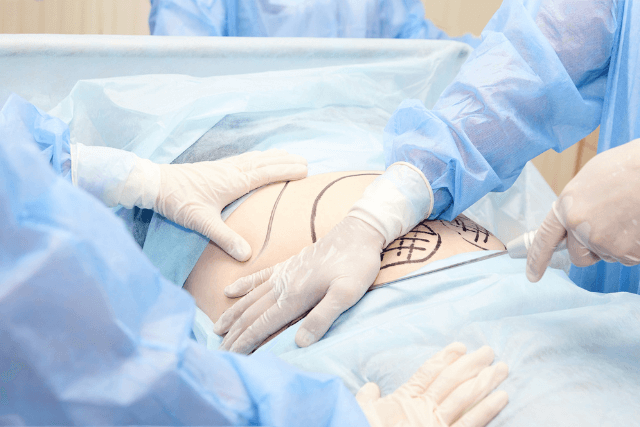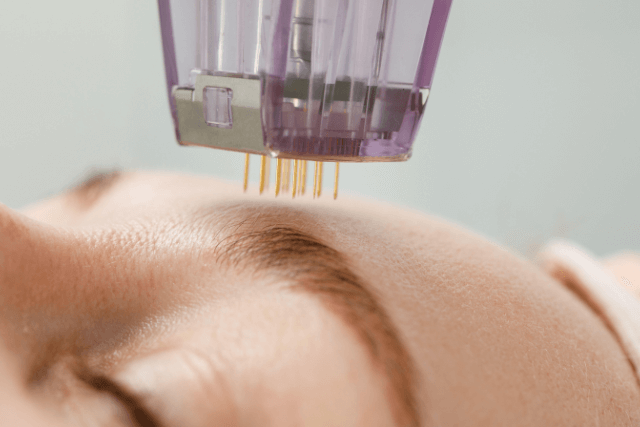Liposuction is a popular cosmetic surgery that many people consider when looking to remove excess fat and achieve a more toned, sculpted appearance. However, as with any surgical procedure, it’s important to understand the risks and realities involved. The question often arises: Is liposuction dangerous?
In this blog, we will explore the risks, address common concerns, and highlight how choosing the right plastic surgeon can significantly reduce potential dangers. After all, finding a qualified surgeon can make all the difference in ensuring a safe and successful procedure.
What Is Liposuction?
Liposuction, also known as lipoplasty or suction-assisted lipectomy, is a cosmetic surgery that removes excess fat from specific areas of the body. The procedure involves the insertion of a small tube (cannula) through small incisions in the skin. A vacuum-like device suctions the fat from under the skin through this tube. Common areas for liposuction include the abdomen, thighs, hips, arms, back, and chin.
Liposuction helps contour the body and remove stubborn fat that resists diet and exercise, but it’s important to note that it is not a weight-loss procedure. This procedure targets individuals who are already at or near their ideal weight but have localized fat deposits.
Is Liposuction Dangerous?
The question “Is liposuction dangerous?” is common, and it’s essential to approach this topic with a clear understanding. An experienced, certified plastic surgeon generally performs liposuction safely, but risks remain. The procedure, like any surgery, presents inherent risks that you can minimize with proper preparation and careful attention to aftercare.
Risks of Liposuction
Although liposuction is a routine procedure, complications can arise if certain precautions aren’t taken. The risks include, but are not limited to:
- Infection: As with any surgery, there’s a risk of infection. Proper sterilization of instruments, following aftercare instructions, and maintaining cleanliness can reduce this risk.
- Scarring: Liposuction requires small incisions, and while they are usually discreet, scarring is still possible. The extent of scarring depends on the surgeon’s skill, the technique used, and how well the patient follows aftercare instructions.
- Numbness or Changes in Sensation: Some patients experience temporary or permanent numbness in the treated areas. This is typically due to nerve damage during the procedure, but it usually resolves over time.
- Blood Clots: Blood clots can form in the veins after surgery, leading to complications such as deep vein thrombosis (DVT). Although rare, DVT can be life-threatening if the clot travels to the lungs (pulmonary embolism).
- Fat Embolism: One of the most serious risks, a fat embolism occurs when fat enters the bloodstream and travels to the lungs, heart, or brain, causing severe complications or even death.
- Uneven Results: In some cases, liposuction can leave the treated area uneven or lumpy. While the surgeon does their best to smooth out the fat, it’s not always perfect, and patients may require additional procedures to correct the issue
- Seroma: Fluid can accumulate under the skin after liposuction, causing swelling and discomfort. Drains may be used to prevent this, but it is still a potential risk.
While these risks are real, they remain rare and you can significantly reduce them by choosing the right plastic surgeon and adhering to proper aftercare instructions.
Choosing the Right Plastic Surgeon
The most important step in ensuring your liposuction procedure is as safe as possible is choosing a skilled, experienced plastic surgeon. A well-qualified surgeon will minimize risks and provide realistic expectations about what liposuction can achieve.
Here’s how you can choose the right plastic surgeon:
- Board Certification: Ensure that the surgeon is board-certified in plastic surgery. Board certification is a sign that the surgeon has received extensive training in cosmetic procedures and meets high standards for patient care.
- Experience and Specialization: Look for a surgeon who specializes in liposuction and has extensive experience with the procedure. Experienced surgeons are more likely to achieve the desired results with minimal complications.
- Before-and-After Photos: Review the surgeon’s portfolio of previous patients. Before-and-after photos are an excellent way to gauge the surgeon’s skill and see what kind of results you can expect.
- Patient Reviews: Check online reviews and testimonials from previous patients. This will give you insight into the surgeon’s reputation, bedside manner, and the overall experience.
- Consultation: Schedule a consultation with the surgeon. During this meeting, ask about the risks, the procedure itself, and what you can expect during recovery. A reputable surgeon will provide honest answers and make you feel comfortable with your decision.
- Safe Surgical Facility: Ensure that the procedure will be performed in an accredited surgical facility. Accredited facilities meet stringent safety standards, which reduces the risk of complications.
By carefully choosing the right surgeon, you can minimize the risks associated with liposuction and increase your chances of a smooth, successful outcome.
The Role of Aftercare in Minimizing Risks
Even with a skilled surgeon, the success of your liposuction procedure depends significantly on the aftercare you receive. Proper aftercare can help minimize complications and speed up the recovery process. Here’s what you can expect:
- Compression Garments: After liposuction, you’ll need to wear compression garments to help reduce swelling, support the skin, and encourage the skin to retract smoothly. Wearing these garments as instructed is crucial to achieving optimal results.
- Follow-Up Appointments: It’s essential to attend follow-up appointments with your surgeon to monitor your progress. Your surgeon will check for any signs of infection or complications and provide advice on how to manage your recovery.
- Rest and Recovery: Take time to rest and recover after the procedure. Avoid strenuous activities for several weeks to allow your body to heal properly.
- Hydration and Nutrition: Staying hydrated and maintaining a healthy diet will support your body’s healing process. It’s essential to eat well and avoid alcohol, smoking, and excessive sun exposure during recovery. Pain Management – You may experience some discomfort or bruising after liposuction, but this is usually temporary. Pain medications and anti-inflammatory drugs can help manage these symptoms.
By adhering to your surgeon’s aftercare instructions and attending follow-up appointments, you can reduce the risk of complications and ensure that your results are as smooth and effective as possible.

Realities of Liposuction
So, is liposuction dangerous? As we’ve explored, the risks associated with liposuction are real, but they are relatively rare. A skilled, experienced plastic surgeon generally performs the procedure safely, and you can minimize the risks with proper aftercare.
While liposuction can effectively reshape and contour the body, it is essential to approach it with realistic expectations. Liposuction is not a solution for significant weight loss, and it’s important to maintain a healthy lifestyle post-surgery to keep the results intact. Additionally, results may vary from person to person, and not everyone will achieve the same level of fat removal or skin retraction.
Why Choose Us for Your Liposuction Procedure?
When it comes to choosing the right plastic surgeon for your liposuction procedure, we pride ourselves on having some of the best professionals in the field. Our surgeons are board-certified, highly experienced, and committed to delivering exceptional results. We understand that undergoing liposuction is a significant decision, and we are here to guide you every step of the way.
We have fully accredited state-of-the-art surgical facilities, ensuring that you receive the highest standard of care in a safe and comfortable environment. Comprehensive aftercare is also provided to ensure your recovery is smooth and successful. Our team is dedicated to minimizing risks and delivering the best possible outcomes for each patient.
Conclusion
In conclusion, is liposuction dangerous? While there are risks involved, liposuction is generally a safe procedure when performed by a qualified, experienced plastic surgeon. By choosing the right surgeon, following proper aftercare, and maintaining realistic expectations, you can significantly reduce the risks and achieve a successful, life-changing result.





